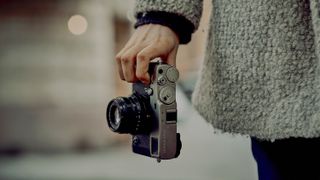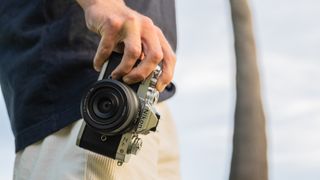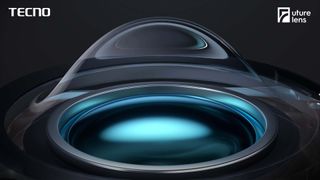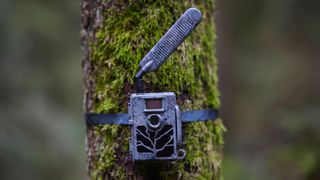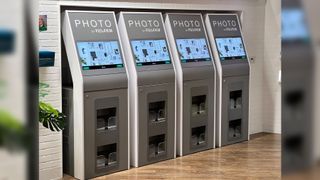The best retro cameras provide a shooting experience like no other. Blending the aesthetics of old film cameras with new camera technology, they combine the classically cool look and feel of the film SLRs and best rangefinders from years gone by and pack them full of cutting-edge tech and many of the conveniences modern photographers have come to expect from some of the best mirrorless cameras on the market.
And this isn't just the hobby horse of a few niche weirdos, like us. It's big business – retro cameras are really popular. Fujifilm basically turned its fortunes around as a company in the early 2010s by introducing the retro-style X-series of compacts and mirrorless cameras, and other companies like Olympus and Panasonic have since hopped on the bandwagon.
Then there's also Leica, which has been producing cameras that blend digital technology and old-school handling for years. If you want to use a modern rangefinder, Leica is pretty much the only game in town.
Retro cameras can be defined in a number of ways. Our own Rod Lawton came up with a neat categorization system for retro cameras, which I'll borrow and tweak slightly for this guide. The eleven entries on this list have been split into two types:
Cheap and simple: these are cameras that look retro, but handle more like modern digital mirrorless cameras in terms of their controls. This is the most affordable way you can get the retro look, though you don't quite get that retro feel.
Real-deal retro: these cameras use physical dial-based controls that feel much more like a classic film camera. They’re often built to discourage excessive use of the rear screen (“chimping”), some making the screen harder to access mid-shoot and others doing away with it entirely! These cameras tend to be more expensive, as some are designed for professional photographers, but you also get a larger sensor and generally better features.
We should note before we start that we're dealing with retro digital cameras exclusively here. If you want to go all the way and use a film camera for that analog touch, our guide to the best film cameras is a good place to start. We also have a guide to the best instant cameras if your retro leanings are towards the knockabout fun of a Polaroid.
So, let's get started with the best retro cameras you can buy.
Best retro cameras: our top picks

The Nikon Zf is the best full-frame vintage-looking digital camera you can get right now, with the smarts of Nikon's flagship cameras in the body that harks back to the Nikon FM2. Read more below
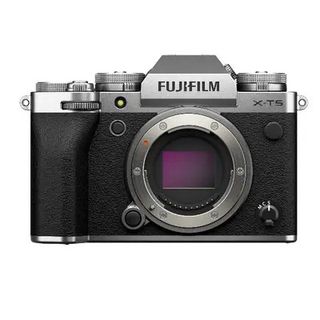
The Fujifilm X-T5 ticks all the boxes for both a retro camera, with its beautiful old school looks and manual dials, but also the lastest cutting edge tech inside with a huge 40MP sensor. Read more below

The Olympus OM-D E-M10 Mark IV offers the superb quality of the OM-D series into a beginner-friendly – and, crucially, affordable – camera body with a retro look. Read more below

Nikon's first mirrorless take on a retro camera has proved very popular among those photographers who want the benefits of digital but the aesthetics of analog. Read more below
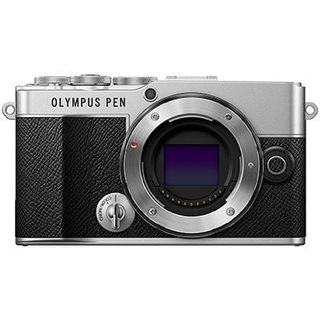
The Olympus Pen series of fashionable, retro-styled mirrorless cameras had lost its way somewhat in previous years but came back with a bang with the Olympus Pen E-P7. Read more below

Three years after its release people are still waiting months to get one which is a testament to how good this 23mm fixed-lens compact camera is. Read more below
Load the next 6 products ↴
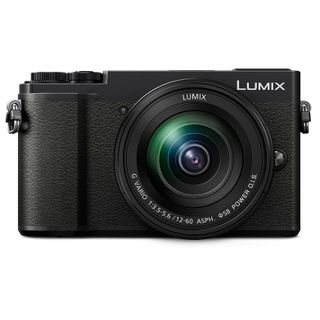
Snappy autofocus, 4K stills from video footage and a high-res electronic viewfinder make this retro-styled camera a brilliant all-rounder with plenty of lenses to choose from. Read more below
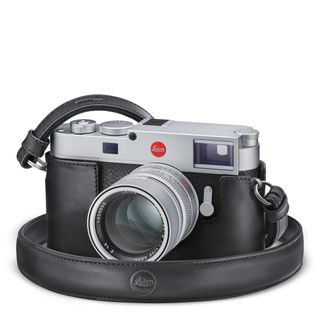
The Leica M11 is aimed at photographers who want extremely high-resolution images, fast shutter speeds and don't mind spending a bit more on Leica's world-renowned build quality. Read more below
Best retro cameras in 2023
Why you can trust Digital Camera World
Best retro camera overall
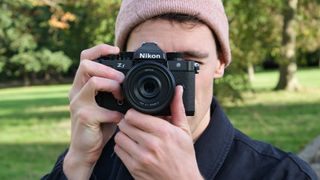
I really love the Nikon Zf for its retro design which is sure to immediately win over any vintage camera enthusiasts. From the moment I laid my hands on this camera, it stirred up a wave of nostalgia for the bygone days of shooting film. The Nikon Z fc was a nice taster, but the Zf body takes everything up a notch, with a better build quality with more substantial and robust brass dials, and a weighty feel reminiscent of the iconic Nikon FM2 that served as its inspiration.
I found that the Zf’s minimal grip is uncomfortable to hold for long periods, and wish I had a Smallrig extended grip when testing. Also, there is a lack of Nikon vintage-style lenses natively for the Z mount, which limits you to modern-looking Nikon lenses, or old Nikon lenses via a mount adapter, which spoils the aesthetic somewhat.
The Nikon Zf is a great camera when it comes to actually taking photos and videos though! Internally, this is the closest to a new Z6 III right now, with its 25MP full-frame sensor and Nikon's cutting-edge Expeed 7 processor, the Zf offers much better autofocus and subject tracking, as well as solid 4K video performance.
Read our full Nikon Zf review for more details
Best for professional use

The Fujifilm X-T5 is the latest in Fujifilm's range of incredibly popular cameras amongst street and travel photographers. With looks like these, they are also appreciated by anyone who wants a compact, very well-built, and stylish camera they don't mind being seen out and about with.
With lots of manual dials like a vintage camera, you can take full manual control in a snap, with Fujifilm's excellent range of compact XF lenses also providing aperture rings like a classic camera.
It isn't just a pretty face though, the X-T5 packs all the latest tech you would need from a top-level camera, with a generous 40-megapixel sensor, in-body image stabilization, and an incredible internal 10-bit 4:2:2 video at 6.2K/30P.
Read our full Fujifilm X-T5 review for more details
Best for retro-look and modern specs
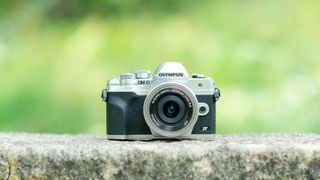
We don’t mind admitting we’re still big fans of the Olympus OM-D E-M10 Mark IV. It brings the superb quality of the OM-D series into a beginner-friendly – and, crucially, affordable – camera body, and does it all with retro style.
What’s there not to like about that? This is the fourth entry in the E-M10 series, and while it doesn't reinvent any wheels, it makes a number of incremental improvements that had our reviewer hugely impressed.
With highly effective continuous autofocusing, the E-M10 IV is a great little camera for capturing the action around you – one of the many reasons it’s so good for travel. The dials crowding the top plate of the camera provide that authentic manual shooting feel we love – it almost could have gone in our real-deal retro, but it’s affordable enough that most users can be tempted by it. The 20MP sensor produces images that are sharp, detailed, and vivid.
Read our full Olympus OM-D E-M10 Mark IV review for more details
Best budget retro camera
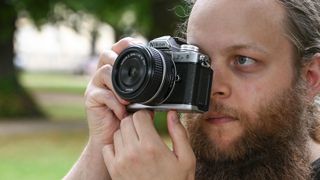
Nikon had a good go at a retro digital camera in 2013 in the form of the Nikon Df – a DSLR now discontinued. While it had its fans, it strained its full retro concept by virtue of the fact that most of its lenses had no aperture rings, and it came at a chunky premium price.
Fast forward ten years and Nikon has tried it again with the Nikon Z fc, a retro camera that sensibly targets a more entry-to-mid-level market. It’s the second APS-C camera for Z mount and comes with dial-based retro controls.
If you prefer not to use them, you can capture shots in a much more digital way by tapping the touchscreen. But we're not sure you'd want to – in our Nikon Z fc review, we found the dial-based controls a joy to operate, making the camera fun to use, with few compromises made for its bags of retro-inspired style. Images look great, and the 4K UHD video is no slouch either.
Read our full Nikon Z fc review for more details
Best for travel

The Olympus Pen series of fashionable, retro-styled mirrorless cameras had lost its way somewhat in previous years but came back with a bang with the Olympus Pen E-P7. Using the same Micro Four Thirds sensor as the E-M10 Mark IV, replacing the aging 16MP model on previous Pen cameras and giving you 20MP to play with.
It’s packed with filters and auto-powered Picture Modes that make it easier for new users to create images with stylish looks and effects. Classic modes like Mono 2 basically simulate the distinctive looks of popular film stocks like Kodak Tri-X, allowing you to give your images a true retro feel.
In our Olympus PEN E-P7 review, we were particularly impressed by the IBIS (in-body image stabilization), which is something of an Olympus specialty and makes the camera especially good for video. Indeed, with 4K 30p video, this one is definitely pitched towards vloggers – pure stills shooters may bemoan the lack of a viewfinder.
Read our full Olympus Pen E-P7 review for more details
Best for lens choice
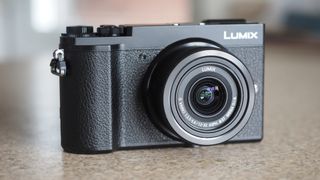
As you can see, the Panasonic Lumix GX9 absolutely looks the part of a retro camera, resembling an older rangefinder-style camera. In practice though, it operates much more like a digital camera, and when we reviewed the Lumix GX9, we found that operating it relies quite a lot on navigating its menus. It's got retro looks, but not so much that retro feel – if that doesn’t appeal, best look elsewhere.
It’s a really strong street photography camera though, with snappy autofocus and decent burst modes – though if you really want to make sure you don’t miss the moment, the 4K Photo modes allow you to extract sharp, high-res stills from 4K footage.
Having the MFT lens mount means there are plenty of lenses to choose from, and the electronic viewfinder is hugely impressive for a camera at this price point. The GX9 may not tick all retro boxes, but it ticks plenty of its own.
Read our full Panasonic Lumix GX9 review for more details
Best all-rounder
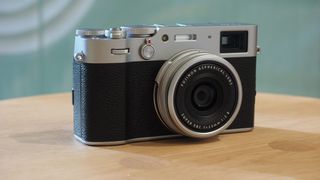
The X100 series was what started the Fujifilm X retro revolution, and these prime-lens compacts have been enduringly popular for more than a decade. The Fujifilm X100V is the latest evolution of the winning combination of an APS-C sensor and a sharp 35mm equivalent prime lens, which has been the foundation of the series since its beginnings.
With dial-led controls, superb images straight out of the camera, and new extra features like optional converters for altering the lens’s field of view, the X100V is the best version of this camera yet. In our review, we appreciated the new, sharper lens that makes images from the X100V even better, as well as the improved autofocus that makes it really feel like a modern camera, without losing that retro shooting approach.
But its party piece, like many FujiFilm cameras, is the ability to use retro-inspired film simulations or 'recipes' as the community calls them to mimic analouge film. But it comes at a luxury price, but try one out and you’ll see why so many photographers have fallen for an X100’s charms.
Read our full Fujifilm X100V review for more details
Best for resolution
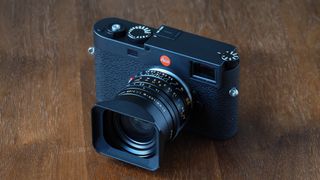
After months of leaks and teases, we've finally got a glimpse at the future of the M-series in the form of the Leica M11, and it's one of the most technologically advanced rangefinders ever made.
Leica hasn't tinkered too much with the formula of a rangefinder camera but has added lots of smart tweaks and features. The triple-resolution full-frame sensor is a real standout, letting you shoot at 60MP, 36MP, or 18MP, all of which use the sensor's full width. This is great for speeding up your workflow with smaller filesizes, and shooting at 18MP also gives you the advantage of an unlimited burst buffer.
The M11 makes use of a new electronic shutter that gives users the option of a 1/16,000sec shutter speed. It does away with the bottom base plate, giving easier access to the battery and SD card. And in another neat touch, the camera also has 64GB of internal storage, making it easy to record simultaneous copies of your images.
Leica has beefed up the battery and added USB-C charging; what's more, if you can afford a little extra on top of the considerable price tag, you can add a new Visoflex 2 electronic viewfinder to augment the rangefinder experience. Designed in conjunction with the M11, it has a 90-degree tilt function.
While we still need to fully review the Leica M11, all signs so far are pointing to a triumph.
Read our full Leica M11 review for more details
Best for black and white photography
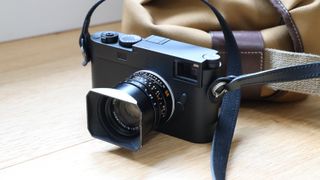
The Leica M11 Monochrom is one of the world’s most niche consumer cameras; a black and white, manual focus only rangefinder camera, which cannot shoot video, and also costs a cool $9000 (£8,300).
These supposed shortcomings are actually its biggest strength, forcing you to carefully consider every shot you take. It harks back to the glory days of film photography and is one of the most enjoyable photography experiences I have had in a while.
This is not a camera for the masses, Leica knows exactly who this camera's specific audience is, and exactly how to please them, and for those select few, there is some good news, it is probably the best version of this camera to date, and therefore the most retro-camera available.
Read our full Leica M11 Monochrom review for more details
Best medium format
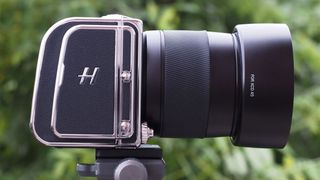
A new frontier in medium format photography, the Hasselblad 907X 50C is a terrific camera in its own right but is also more than that. It can be used as a digital back for Hasselblad V-system cameras that date back to 1957, potentially breathing life into shelves of dusty, untouched cameras.
When we reviewed the Hasselblad 907X 50C, we were genuinely excited by what it represents: the first step in a hugely flexible modular system. It’s a genuine bridge between old and new, in a way that a lot of other retro cameras only pretend to be. If you crave digital medium format, a Fujifilm GFX camera offers a lot more bang for your buck, but this Hasselblad creation is something completely unique.
Read our full Hasselblad 907X 50C review for more details
FAQs
What's the best budget retro camera?
The best budget retro-style camera that gives the feel of nostalgia, but has the tech of a modern-day camera has to be the Nikon Z fc, this retro camera sensibly targets a more entry-to-mid-level market and provides that retro feel with dial-based retro controls in cool 80s styling.
Is the Fujifilm X100V worth it?
In short, yes. With dial-led controls, superb images straight out of the camera, and new extra features like optional converters for altering the lens’s field of view, the Fujifilm X100V is the best version of this camera yet. it really feels like a modern camera, without losing that retro shooting approach.
How we test retro cameras
When we test cameras, we do so both in real-world shooting scenarios and in carefully controlled lab conditions. We use our lab tests to measure resolution, dynamic range, and signal-to-noise ratio, providing a peerlessly accurate representation of what the sensor can do.
We will always try and test cameras in different environments and on different subjects including low light and bright sunshine or landscapes and people. We pay attention to how responsive the autofocus and tracking is, whether the buffer ever gets full when shooting in burst mode, how easy the camera is to operate and whether it comes with handy custom buttons that make your shooting process centred around you.
We measure resolution using ISO resolution charts and track dynamic range using DxO Analyzer test equipment, which we also use for noise analysis throughout the camera's ISO range. We test in the real world to get a sense of how a camera feels to use, how it handles, and how enjoyable it is to shoot with. This is extra important with retro cameras, where that old-school feel is just as important as the old-school looks!
